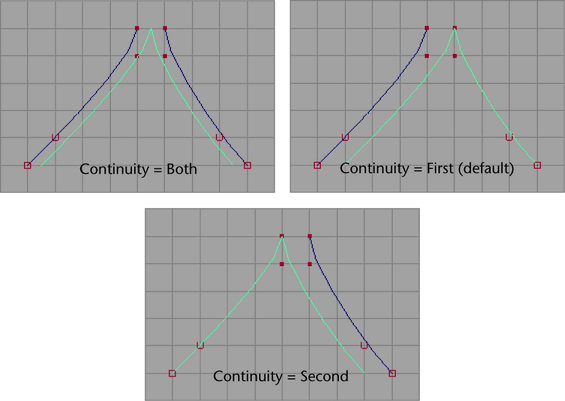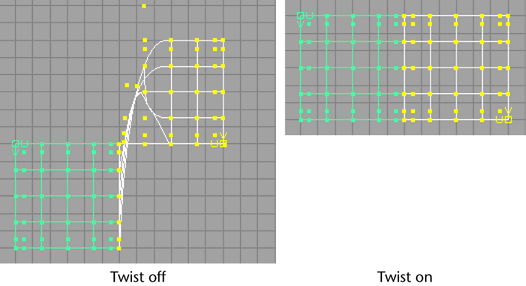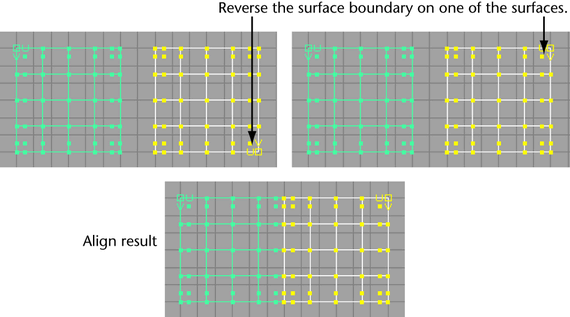Makes the edges of surfaces tangent or curvature continuous.
Continuity means that two surfaces share a boundary. Continuity options let you specify how to achieve continuity for the two surfaces.
Positional continuity means that the ends of two surfaces meet exactly. The following figure shows a side view of how surfaces are aligned with each Modify Position option (First, Second, and Both). The alignment occurs depending on which surface is selected first (white) and last (green).

Tangent continuity exists when two surfaces are placed end to end, and the tangents at the endpoints also match. An example side view of aligned surfaces follows:

Curvature continuity exists when two surfaces that meet with tangent continuity also have the same curvature at the joint. When this option is selected, the curvature scale sliders are enabled.
You can choose the order you want the surface modified. The following tables show what is modified with the different Modify options.
The values in the Tangent Scale and Curvature Scale boxes increase or decrease the tangent magnitude or curvature at the end of the surface. You can enter a value in the box or drag the slider bar. The following table shows what happens when the tangent and curvature is scaled.
The Reverse and Swap options for surfaces define whether the surfaces have to be reversed and or swapped before performing the alignment (remember, align uses the end of the first surface and the start of the second). The reverse is done in the direction defined by Direction U (on or off) in the Channel Box.
If Twist is turned on, the second surface is also reversed in the opposite direction of Direction U. Turn this on if your aligned surface is twisted.
For example, if you align the surfaces and the surface boundaries are going in different directions, the following results.

When you select the surfaces, the align result is twisted. Turn Twist on either from the Attribute Editor or in the Channel Box to correct the problem.

The other alternative is to check the surface U/V direction before you align the surfaces. Use Edit NURBS > Reverse Surface Direction to reverse the surface directions if necessary.
